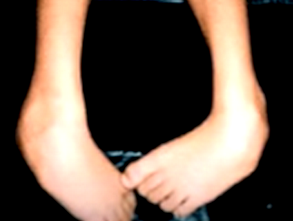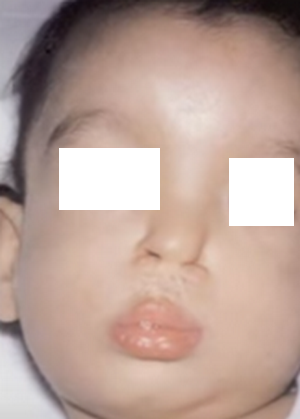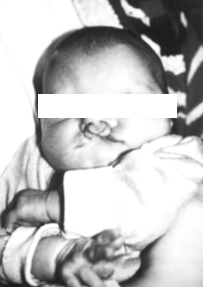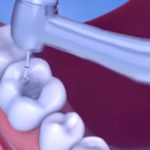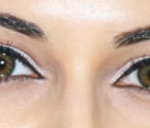Also referred to as 4p-syndrome, Wolf-Hirschhorn syndrome is a disorder that occurs due to gene anomalies. The disorder occurs when a section of chromosome 4 is erased out during cell division in reproduction. If a section of a chromosome becomes missing, it may damage normal development. Babies and adults with deleted chromosome 4 and hence the development of Wolf-Hirschhorn have facial features like a broad nose, wide-set eyes, low-set ears, and a characteristic bump on the forehead. Each case of Wolf-Hirschhorn may be different because the type and number of symptoms largely depend on the extent of chromosome deletion.
The disorder has no cure, however, symptoms can be managed in different ways including repair of defects, physical therapy, and drug therapy. It is not known what the life expectancy of people with Wolf-Hirschhorn syndrome is, but diagnosis and proper treatment help extend the lifespan of the individuals. The disorder is rare with only 1 in 50,000 births and affects more females than males.
Causes
It’s not known exactly why there is spontaneous change in genes occurring during the time of baby development in the womb. The broken or deleted chromosome isn’t inherited from parents, and the deletion occurs after fertilization. Three different genes may be deleted in chromosome 4 and it is this aspect that determines the kind of symptoms a baby has. There is a gene that is associated with facial abnormalities and another that triggers seizures affecting almost all children with the disorder.
About 90 percent of Wolf-Hirschhorn syndrome cases are not as a result of gene inheritance, mostly they are due to deletion of part of chromosome that occurs randomly in time of reproductive cells formation or during early days of embryo development. People having no history of Wolf-Hirschhorn syndrome may have chromosomal changes that make them have the disorder.
A small number of people having Wolf-Hirschhorn syndrome have unusual chromosomal anomaly like ring chromosome 4. With ring chromosomes, they happen when the chromosomes break in areas within the ends the arms fusing together to create a circular structure. During the process of breaking, genes found close to the ends are lost.
The other few cases of Wolf-Hirschhorn syndrome are as a result of inheritance of copy of chromosome 4 that has a deleted segment. One parents of the individual carries a chromosomal rearrangement occurring between chromosome 4 and some other chromosome. Such rearrangement is known as a balanced translocation. With the case of balanced translocation, there isn’t any genetic material lost or gained and the chromosomal changes don’t cause health problems.
That said, translocations may be unbalanced when being passed to children. Some individuals having Wolf-Hirschhorn syndrome have an unbalanced translocation they inherit and it deletes genes found close to the end of the smaller arm of chromosome 4. When there is loss of the genes, it brings about slow growth, intellectual disability, and other health problems.
Symptoms of Wolf-Hirschhorn Syndrome
The disorder affects different parts of the body manifesting with both physical and mental abnormalities. Common symptoms are facial defects, intellectual disabilities, delayed development, and seizures. A baby with Wolf-Hirschhorn syndrome may have other signs and symptoms like:
- Bulging, wide-set eyes
- Downturned mouth
- Kidney and heart problems
- Droopy eyelids and some other eye problems
- Low birth weight
- Cleft lip or palate
- Underdeveloped muscles
- Failure to thrive
- Scoliosis
- Microcephaly or an atypically small head
Almost every individual with the disorder has characteristic facial features like a broad, flat nasal bridge, as well as a high forehead. The combination of these features has an appearance known as ‘Greek warrior helmet.’ The individual may have widely spaced eyes that protrude. The distance between the upper lip and the nose may also be shorter than normal and the chin is small. The ears are poorly formed with small pits or holes or the skin may have tags or flaps.
Wolf-Hirschhorn Syndrome – Pictures
Treatment
While there is no cure for the disorder, treatment is aimed at managing the symptoms. Every patient’s case is unique and doctors will examine the symptoms and develop appropriate treatment modules. The treatment plans include:
- Surgery to help repair defects
- Occupational or physical therapy
- Genetic counseling
- Support through social services
- Control of seizures
- Special education
- Drug therapy
Wolf-Hirschhorn Syndrome – Life Expectancy
It is difficult to predict the life expectancy of people who have Wolf-Hirschhorn syndrome. The lifespan of the individuals varies based on the extent of the disease. There is more risk with the patients between 0 and 2 years, meaning at that time, they have a 50 percent likelihood of dying. After two years, many patients have improved life expectancy. Some patients have grown to be 40 and as new treatment approaches come in place and with improved healthcare, it is expected that patients with Wolf-Hirschhorn syndrome will have improved prognosis and life expectancy.
In essence, the long-term outlook or prognosis of individuals having Wolf-Hirschhorn syndrome is by large based on the characteristic features presenting in them and their severity. Muscle weakness could increase an individual’s risk of getting chest infections, something that may eventually reduce their life expectancy. A majority of people with no severe heart defects, uncontrollable seizures, and chest infection may survive into adulthood.
